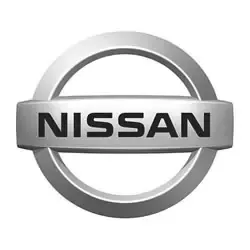Nissan D21 Tire Pressure
Most common recommended tire pressure for Nissan D21 can range from 26 psi to 36 psi depending on year of production, trim and OEM tire size, but it maybe different for older models. It is imperative to confirm the exact tire inflation for your Nissan D21 to ensure safety on the road. Always refer to your vehicle owner's manual for the correct tire pressure designated by vehicle's manufacturer.
Select your Nissan D21 production year to see its recommended tire inflation.
| Model Year | Front Tires | Rear Tires |
|---|---|---|
| 1994 Nissan D21 | 26 - 36 psi | 26 - 36 psi |
| 1993 Nissan D21 | 26 - 36 psi | 26 - 36 psi |
| 1992 Nissan D21 | 26 - 35 psi | 26 - 35 psi |
| 1991 Nissan D21 | 26 - 36 psi | 26 - 36 psi |
Recommended Tire Pressure for Nissan D21
Maintaining the recommended tire pressure for a Nissan D21, also widely recognized as the Hardbody in some markets, is crucial for several reasons that extend well beyond merely avoiding a flat tire. First, it directly influences the safety of the vehicle; proper inflation ensures that the tires maintain optimal contact with the road, enhancing handling and braking performance, especially in adverse conditions. This is vital for preventing accidents caused by loss of control. Secondly, tire pressure impacts the longevity of the tires themselves. Under-inflated tires can lead to uneven wear, necessitating premature replacement, while over-inflation may result in decreased grip and increased wear in the center of the tire tread. Moreover, fuel efficiency is significantly affected by tire pressure; correctly inflated tires reduce rolling resistance, meaning the engine doesn't have to work as hard to move the vehicle, thereby improving gas mileage. For a Nissan D21, which is often used for both daily commuting and more demanding tasks like hauling and towing, maintaining the recommended tire pressure is a simple yet effective way to ensure the vehicle performs efficiently, safely, and economically. This practice not only extends the lifespan of the tires but also contributes to the overall reliability and operational cost-effectiveness of the vehicle, making it an essential aspect of routine vehicle maintenance.

All listed guides, data and/or calculations are for informational purposes only. TirePressure.com does not warrant or make any representations regarding the accuracy of or the results of the use of this information. Always refer to vehicle owner's manual for the correct tire pressure configuration.